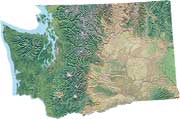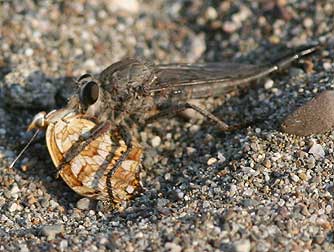
Robber fly eating a butterfly
As adults, robber flies (family Asilidae) aggressively hunt any insect it can subdue, including those with stinging defenses such as bees and wasps. Upon catching another bug with its strong legs, the robber fly pierces the prey's exoskeleton with its needle-like tongue, injects it with paralyzing saliva and sucks out its insides as a liquid.
Robber fly larvae also hunt for eggs, the developing larvae and pupae of insects that nest in the ground or in wood.
The robber fly larvae themselves are hunted and parasitized by progressive bee flies which check their populations.
Robber flies are commonly seen hunting in open areas such as grasslands, shrub-scrub, deserts and open woodlands in the heat of day.
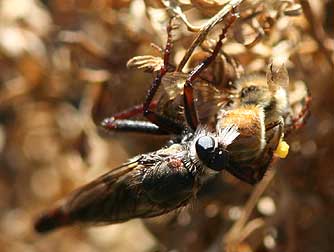
Robber fly sucking juices from a captured bee
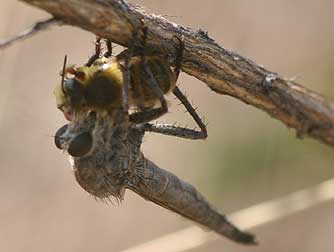
Robber fly consuming another bee
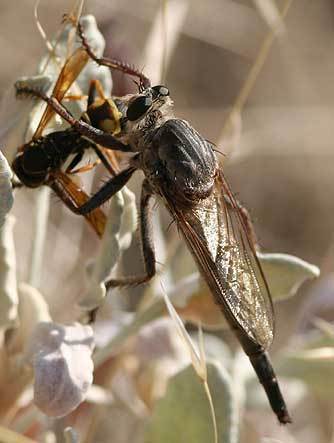
Robber fly consuming a wasp
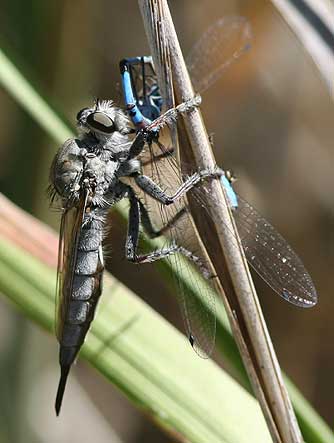
Robber fly and damselfly
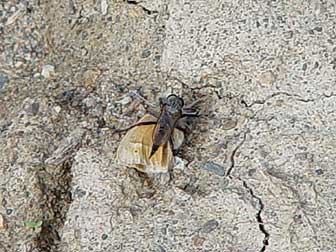
Robber fly catching a common
ringlet butterfly
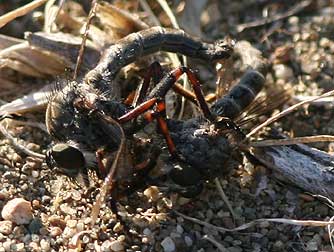
Robber flies mating
